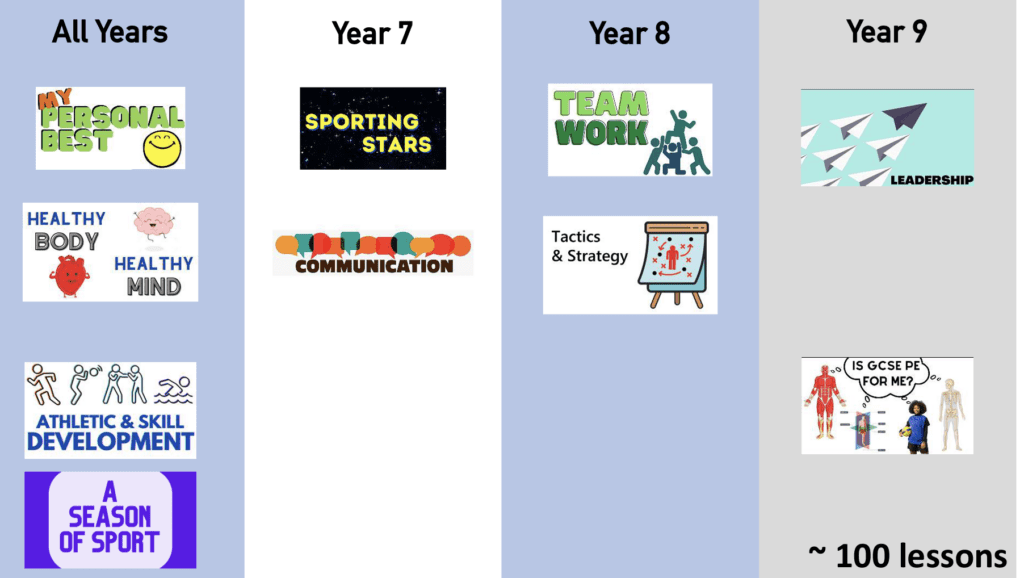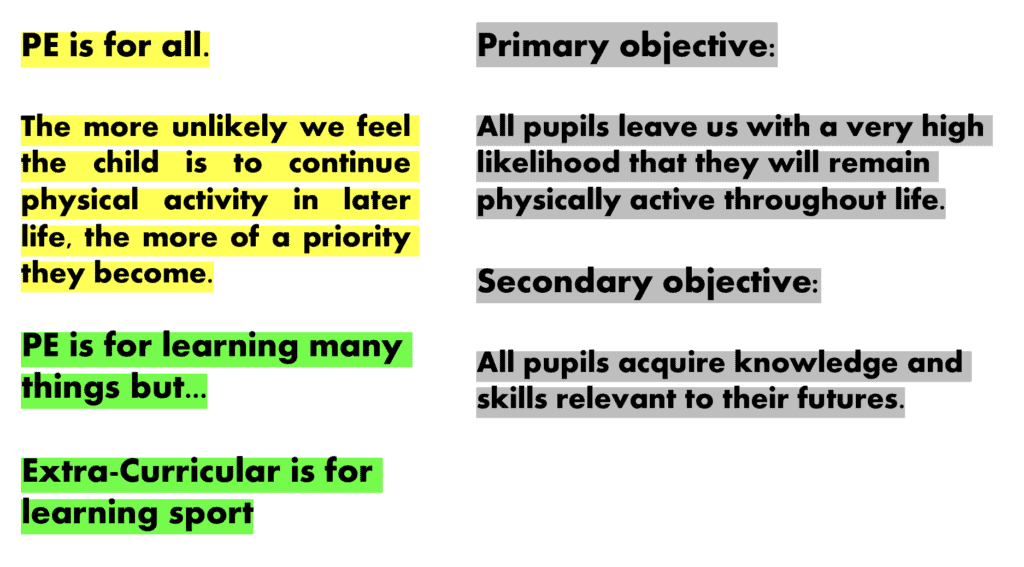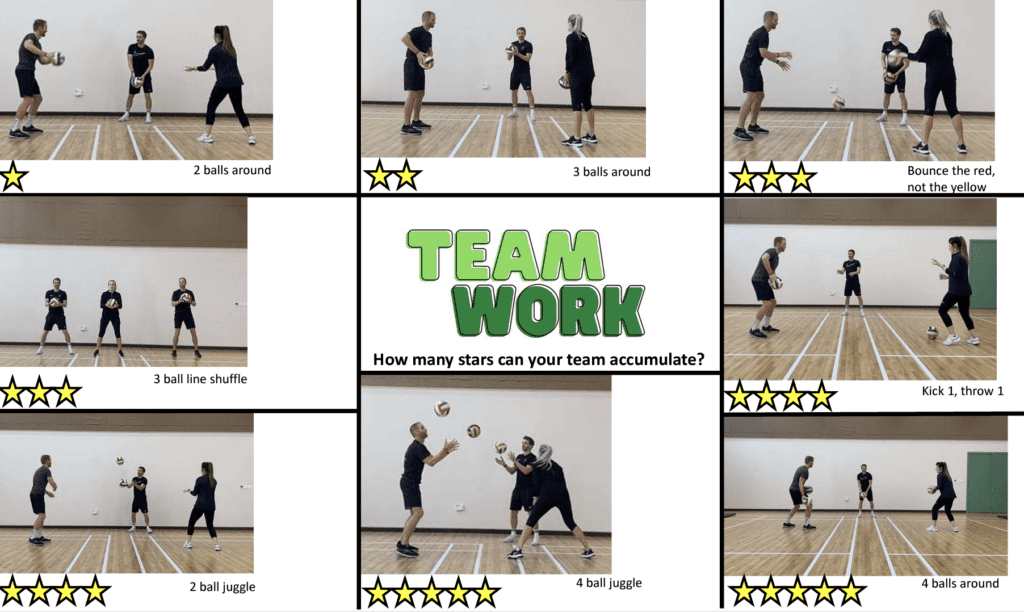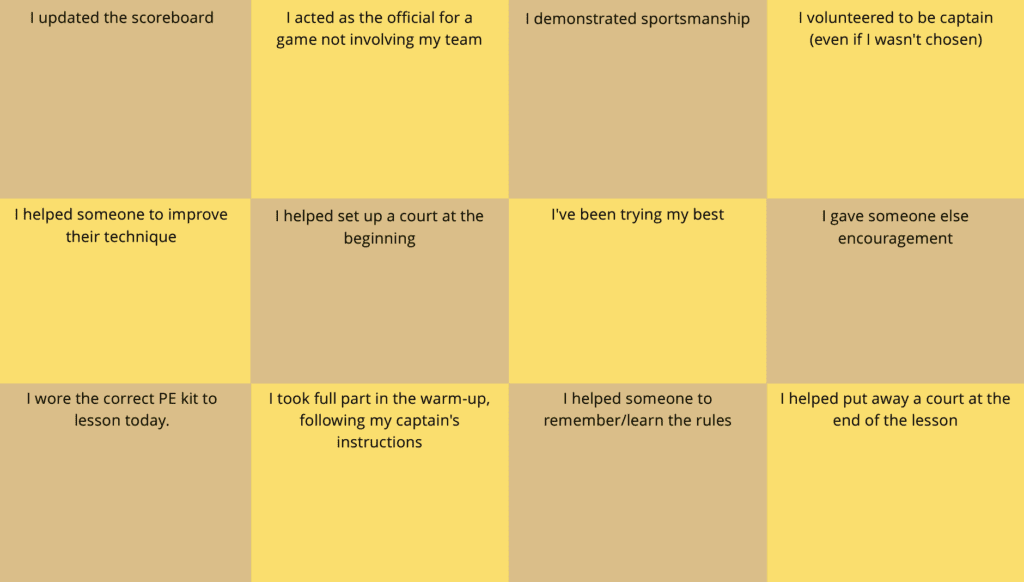
Part One
Fellow PE teachers, have you ever questioned whether our subject is serving young people in the best way it can? Are we justifying our place as a compulsory subject within all Key Stages in the UK by providing skills and knowledge that all pupils need? With various health crises attributed, at least in part, to a lack of participation in physical activity (PA) by the population; are we using our position as the only guaranteed PA young people will experience to inspire them enough to opt to do it when it becomes a choice only they can make?
Like a growing number of voices in the profession, I believe PE should be providing experiences which help to develop much more relevant and meaningful content to our pupils than many currently receive. Aided by the extra time afforded during Covid restrictions and with the help of my department at Sherborne Qatar Senior School, I embarked on designing a new direction for PE at our school, initially focussed on Key Stage 3. It’s a direction which I believe offers our pupils more opportunities to nurture physical literacy while learning skills that will transfer into life beyond their schooldays.
As someone with several years of experience in a UK state school as well as nearly a decade in international education, I have drawn on my varied experiences to lead the creation of this curriculum. I hope the story of its design and ongoing development will inspire others in our profession to consider if they can provide an even better experience for the young people in their schools too, and to be part of the ongoing conversation about the purpose of PE.
Rationale
“They should teach that in schools” is a phrase which often accompanies public distress at a range of society’s woes, often concerning young people. While educators will argue there’s not a lot of opportunity currently to juggle even more content in the school curriculum, it does demonstrate that the public believe that what is being taught in our schools must be relevant and of value to people’s futures.

Imagine a Modern Foreign Languages (MFL) department deciding to teach pupils a few words each lesson from a whole host of fairly obscure languages which almost none of the pupils would ever need to know again, we’d rightly conclude that as an unacceptable use of curriculum time and certainly not relevant or of value to pupils’ futures. Yet, in many schools, PE lessons do the equivalent of this lesson-by-lesson, year-on-year.
To put it bluntly, the widely accepted approach to PE adopted by many departments means that a large percentage of lessons are scarcely relevant to the futures of those being taught. Often, sports dominate the curriculum with lessons dedicated to learning particular skills from within them. The choice of sport is often determined by the teacher’s expertise, meaning pupils may get a very different experience depending on the teacher assigned to them or when compared to pupils at different schools. These skills are rarely required by anyone upon leaving school, nor are they taught for long enough to be developed particularly well, often just one lesson per year. When was the last time the adults you know needed to putt a shot or perform a down-sweep baton changeover? What about a net shot in badminton or a lay-up in basketball? Perhaps you know adults who can’t function without performing the Indian dribble? At best you might argue that this approach to PE offers a taster of sports and gives pupils an idea of what they might like to do outside of school, but experience tells me that is rarely the outcome and we surely cannot justify remaining as a compulsory subject on the basis of a few pupils discovering a sport they like.
Considering a principle purpose of schools is in preparing young people for life beyond their school years, it’s difficult to see how this approach ties in. Modern day PE departments must consider ourselves worthy of delivering an education which is valued by all and there are many, many outstanding practitioners in our field ready to do so. We accept that PE being some sort of discipline centred departure from academics or military drill has been consigned to history, but we still need to question how our subject content can evolve to relate to pupil’s 21st century futures and make the most of their time with PE staff.
None of this is borne through the intent of PE teachers. This approach is the result of multiple generations of PE departments doing things in the same way, in most cases without an alternative nor perhaps the resources to create one. For at least the first decade of my career, I too taught in the way I am alluding to, joining my first department as a PE teacher and unquestioningly teaching like everyone else around me was doing. Indeed, it was how I was trained and how I had been taught by my PE teachers a decade or so earlier, so everything pointed to this being the way things should be done.
However it is my belief that PE can provide a better experience for young people by thinking about how we can serve pupils best. PE is opportunity to inspire young people into a lifelong participation in PA while also using its unique characteristics to instil values, skills and knowledge which are relevant to the life and work they are working toward. It was this belief that led to the process of creating our new curriculum.
Foundation
As tragic as it has been, the Covid-19 pandemic brought opportunity to educators. In my case, for the first time since qualifying, I had a prolonged period of time away from the whirlwind of normal teaching, clubs and fixtures in which to read, listen and watch the inspiring stories being shared by fellow professionals. It was the stimulus required to take on the substantial challenge of overhauling everything my department do in our KS3 provision.
A curriculum needs a steadfast philosophy to be built on. Ours is that we are striving to cater for all of our pupils in all of our lessons, designing experiences which build healthy, lifelong relationships with physical activity while also providing skills which are relevant to even the most reluctantly active. Developing pupils’ physical literacy and its four strands (motivation, confidence, movement competence, and understanding) lie at the heart of this. As the only experience many of our pupils have of physical activity in their week, we know that we play a vital in role in persuading them that it should be something they develop the habit of doing before post-16 when it becomes a choice not a time-tabled commitment.

We take the view that if a pupil wants to learn sports specific skills then the best place for it is extra- curricular (EC) provision and external clubs where the environment for doing so is much more conducive. It is part of our duty to provide the former and to do what we can to link pupils to the latter. We wear two hats. One for PE – the subject for all, and one for school sport and EC activities – for those who choose to do it. It’s very important we don’t blur those lines and use PE to train for competition or as trials for teams (that’s not to say you can’t learn a lot about pupils in PE and direct them towards EC).
In order to highlight the diverse range of pupils we teach, I introduced my department to the Sport England Youth Personalities document which is essential reading for any PE teacher. This document really demonstrates the varied relationships our pupils have with PA, and how the traditional model often fails to provide for so many of them. You discover just how many are switched off by competition, want to focus on health and fitness, or may prefer to work with friends. While resources mean we can’t please all of the people all of the time, we try to keep these relationships and motivations in mind and wherever possible plan for experiences which allow pupils to experience PA in a way that suits them best. This could be by having lessons with flexible options, or by ensuring that lessons don’t follow the same formula or model throughout the year. In perhaps a reversal of the elitist attitude many PE departments are accused of having, we recognise that, in many ways, the most important pupils we teach in PE are those who are most at-risk of not developing the habit of taking part in PA in later life.
A great example of this is running. The Sport England Active Lives survey consistently shows us that running has one of the highest participation rates amongst adults. Yet schools often do all they can to put many young people off it by the way it is delivered (try searching cross country on twitter). I’ve read countless stories of adults who hated running because of school, but rediscovered it years later through something like Park Run or Race for Life. The question is, how many are put off but don’t rediscover it and how many of those now live in poor health yet things might have been different if their primary memory of PA wasn’t trudging around muddy fields and returning to school exhausted but in last place?
To be more forward-thinking, how about we ask how we can deliver running to young people so that they might find it more enjoyable? How about we don’t use a one-size-fits all (Cross Country) approach, but instead give pupils a menu of ways to go for a run and let them choose one according to their motivations? How about we help them understand all the things which might put them off running (such as oxygen debt) so that running might not feel so difficult? How about we allow run-walk-run to be acceptable and not a reason to point someone out? And for those competitive pupils who love cross- country? It hasn’t gone anywhere, it’s there on the menu.
With all this in mind, finding ways of making PE enjoyable is a central objective of every lesson. If we can provide as many enjoyable experiences of physical activity each year as possible, we’ll have gone a long way to playing our part in developing a positive relationship with it. A Level PE teachers familiar with the triadic model of attitudes will recognise the ‘affective’ component of attitude. It’s the reason children exasperated chef Jamie Oliver after he showed them what was inside chicken nuggets and the reason it’s dangerous for me to have multi-packs of crisps in the kitchen cupboard. Quite simply, enjoyment is a powerful force that gravitates us towards doing things no matter whether we know they are good for us or not, and so forging that link in each pupil’s mind between enjoyment and PA is one of our priorities. What enjoyment means is wide ranging, and we don’t simply aim for ‘fun’. Feelings of being involved, working with friends, mastering or improving at something, accomplishing a challenge, and being trusted to work independently are just some ways pupils may find lessons enjoyable. Measuring pupil enjoyment of lessons is going to be a key part of our future journey and a gauge by which to inform future developments.

Making Learning Relevant
What does the future we are helping young people get ready for even look like? Most of us in education will have heard the notion that we are preparing young people for jobs that don’t even exist yet. This is often accompanied by an assertion that 21st century employers will consider ‘soft’ skills as important in a future employee as factual subject knowledge, if not more so. Soft skills are numerous, but if you scour multiple articles written on the subject then several reoccur: Teamwork… Communication… Strategic thinking… Leadership…
Can you think of a better opportunity for young people to develop such vital skills than in PE? They are natural bedfellows with physical activity. Most of us will recognise that in many ways we already do develop these to some extent and it’s sometimes referred to as PE’s ‘hidden curriculum’ – skills that can be developed in addition to the lesson objectives. However, how many of us actually plan for this? How can we be sure all young people learn to be better leaders/communicators/team members/strategic thinkers unless we guide them to be so? It all feels like it’s too often left to chance. For our new curriculum I put forward the idea that, for part of the year, we bring the hidden curriculum out of the shadows and to the forefront of what we deliver with enjoyable physical activity experiences providing the vehicle.
Further concepts which our curriculum will help to deliver key messages from are Growth Mindset and Healthy Body, Healthy Mind. I believe both are fully justifiable under the notion of providing young people with knowledge and understanding which is relevant for their future while also lending themselves to being taught through physical activity, more so than pretty much anything else in most young people’s lives. Combined with our lessons which chiefly focus on physical competency (including swimming, parkour, trampolining, gymnastics, dance, jump rope), I believe a full year of PE at our school helps pupils to strengthen all four strands in their physical literacy journey.
Stay In Your Lane!
While perhaps moving away from explicitly teaching sport skills may be seen as a departure from the purpose of our subject, our curriculum is very much one which helps pupils to become better performers in PA, even before reflecting on how these developments might transfer into life and their futures in general. If we get our curriculum right, it would be hard to argue that a pupil becoming better at communicating with peers before, during and after a team game/ group task, is not:
- Better at structuring verbal feedback,
- Better at leading small groups of peers,
- Better able to weigh up the attributes of their team and how best to apply it to the game/task,
- Better at understanding the need to fail, for deliberate practice, or how hard work and time spent practicing link to mastery,
- Better at understanding team dynamics,
- Going to become a better sports performers as a result.
Would the Sports Enthusiasts in your group benefit more from learning these messages for their own performances than traditional sports skill lessons? I believe so. If they’re playing lots of sport outside of school, a 45 minute mixed ability experience in the traditional mould isn’t going to push them on a great deal, but developing these attributes really could.

Would those without much interest in sports participation benefit more from learning these messages than a traditional sports skill lesson? I would say so. Learning a particular skill is irrelevant to them, but developing the attributes listed could help to develop them into well-rounded young people better prepared for their future.
Final Thoughts For This Part
As aforementioned, these conceptual lessons form part of our curriculum, not the entirety. We deliver lessons with physical competency at their core as well as having a short part of the year with the Sport Education model. It’s my belief that the variety helps us to keep learning interesting and means we will, ourselves, get a better understanding of what engages our pupils most.
So far, I have discussed our curriculum development at a Macro-level, yet so much innovative thought has also gone into the Meso- and the Micro- levels. I look forward to sharing how we approached the delivery and pedagogy required to make lessons the best possible experience for pupils when I return with Part Two. In the case of our curriculum, we have spent a great deal of time as a department thinking about how best to deliver this new content in the most active, inclusive and enjoyable ways and have tried to craft lessons which do so.
It is an ongoing journey of curriculum development in which I know I am going to learn a lot about our pupils and our subject. For someone who has just notched up year 16 in my career, it’s exciting to think there’s so much still to learn and I really look forward to sharing it all with you through PE scholar.
About the author
This guest blog has been written by Carl Broome who is Head of PE at Sherborne Qatar Senior School. Access his PowerPoint slides below to find out more and tune back in to part 2 of his story later in the year.


Responses